Entry Database : PDB / ID : 1zzpTitle Solution structure of the F-actin binding domain of Bcr-Abl/c-Abl Proto-oncogene tyrosine-protein kinase ABL1 Keywords / / Function / homology Function Domain/homology Component
/ / / / / / / / / / / / / / / / / / / / / / / / / / / / / / / / / / / / / / / / / / / / / / / / / / / / / / / / / / / / / / / / / / / / / / / / / / / / / / / / / / / / / / / / / / / / / / / / / / / / / / / / / / / / / / / / / / / / / / / / / / / / / / / / / / / / / / / / / / / / / / / / / Biological species Homo sapiens (human)Method Authors Hantschel, O. / Wiesner, S. / Guttler, T. / Mackereth, C.D. / Rix, L.L.R. / Mikes, Z. / Dehne, J. / Gorlich, D. / Sattler, M. / Superti-Furga, G. Journal : Mol.Cell / Year : 2005Title : Structural Basis for the Cytoskeletal Association of Bcr-Abl/c-Abl.Authors : Hantschel, O. / Wiesner, S. / Guttler, T. / Mackereth, C.D. / Rix, L.L.R. / Mikes, Z. / Dehne, J. / Gorlich, D. / Sattler, M. / Superti-Furga, G. History Deposition Jun 14, 2005 Deposition site / Processing site Revision 1.0 Aug 30, 2005 Provider / Type Revision 1.1 Apr 30, 2008 Group Revision 1.2 Jul 13, 2011 Group Revision 1.3 Mar 9, 2022 Group / Database references / Derived calculationsCategory database_2 / pdbx_nmr_software ... database_2 / pdbx_nmr_software / pdbx_struct_assembly / pdbx_struct_oper_list / struct_ref_seq_dif Item _database_2.pdbx_DOI / _database_2.pdbx_database_accession ... _database_2.pdbx_DOI / _database_2.pdbx_database_accession / _pdbx_nmr_software.name / _struct_ref_seq_dif.details
Show all Show less Remark 999 SEQUENCE Two additional C-terminal residues (LE) result from primer design.
 Yorodumi
Yorodumi Open data
Open data Basic information
Basic information Components
Components Keywords
Keywords TRANSFERASE / four helix bundle /
TRANSFERASE / four helix bundle /  nuclear export signal
nuclear export signal Function and homology information
Function and homology information nicotinate-nucleotide adenylyltransferase activity / regulation of modification of synaptic structure / positive regulation of extracellular matrix organization / positive regulation of microtubule binding / delta-catenin binding / B cell proliferation involved in immune response / neuroepithelial cell differentiation / microspike assembly / positive regulation of Wnt signaling pathway, planar cell polarity pathway / cerebellum morphogenesis / positive regulation of blood vessel branching / B-1 B cell homeostasis / mitochondrial depolarization / negative regulation of ubiquitin-protein transferase activity / neuropilin signaling pathway /
nicotinate-nucleotide adenylyltransferase activity / regulation of modification of synaptic structure / positive regulation of extracellular matrix organization / positive regulation of microtubule binding / delta-catenin binding / B cell proliferation involved in immune response / neuroepithelial cell differentiation / microspike assembly / positive regulation of Wnt signaling pathway, planar cell polarity pathway / cerebellum morphogenesis / positive regulation of blood vessel branching / B-1 B cell homeostasis / mitochondrial depolarization / negative regulation of ubiquitin-protein transferase activity / neuropilin signaling pathway /  neuropilin binding / bubble DNA binding / negative regulation of protein serine/threonine kinase activity /
neuropilin binding / bubble DNA binding / negative regulation of protein serine/threonine kinase activity /  regulation of Cdc42 protein signal transduction / activated T cell proliferation / cellular response to dopamine /
regulation of Cdc42 protein signal transduction / activated T cell proliferation / cellular response to dopamine /  regulation of cell motility / regulation of axon extension / proline-rich region binding / positive regulation of dendrite development / mitogen-activated protein kinase binding / myoblast proliferation / alpha-beta T cell differentiation / regulation of hematopoietic stem cell differentiation /
regulation of cell motility / regulation of axon extension / proline-rich region binding / positive regulation of dendrite development / mitogen-activated protein kinase binding / myoblast proliferation / alpha-beta T cell differentiation / regulation of hematopoietic stem cell differentiation /  syntaxin binding / cardiac muscle cell proliferation / HDR through Single Strand Annealing (SSA) / regulation of T cell differentiation / negative regulation of double-strand break repair via homologous recombination / positive regulation of cell migration involved in sprouting angiogenesis / Fc-gamma receptor signaling pathway involved in phagocytosis / negative regulation of cell-cell adhesion /
syntaxin binding / cardiac muscle cell proliferation / HDR through Single Strand Annealing (SSA) / regulation of T cell differentiation / negative regulation of double-strand break repair via homologous recombination / positive regulation of cell migration involved in sprouting angiogenesis / Fc-gamma receptor signaling pathway involved in phagocytosis / negative regulation of cell-cell adhesion /  Myogenesis /
Myogenesis /  regulation of microtubule polymerization / positive regulation of osteoblast proliferation / RUNX2 regulates osteoblast differentiation / negative regulation of cellular senescence / platelet-derived growth factor receptor-beta signaling pathway / positive regulation of focal adhesion assembly / negative regulation of long-term synaptic potentiation / Bergmann glial cell differentiation /
regulation of microtubule polymerization / positive regulation of osteoblast proliferation / RUNX2 regulates osteoblast differentiation / negative regulation of cellular senescence / platelet-derived growth factor receptor-beta signaling pathway / positive regulation of focal adhesion assembly / negative regulation of long-term synaptic potentiation / Bergmann glial cell differentiation /  associative learning / neuromuscular process controlling balance /
associative learning / neuromuscular process controlling balance /  regulation of endocytosis / actin monomer binding / negative regulation of BMP signaling pathway / negative regulation of mitotic cell cycle /
regulation of endocytosis / actin monomer binding / negative regulation of BMP signaling pathway / negative regulation of mitotic cell cycle /  mismatch repair / endothelial cell migration / RHO GTPases Activate WASPs and WAVEs / positive regulation of T cell migration / BMP signaling pathway / canonical NF-kappaB signal transduction / negative regulation of endothelial cell apoptotic process /
mismatch repair / endothelial cell migration / RHO GTPases Activate WASPs and WAVEs / positive regulation of T cell migration / BMP signaling pathway / canonical NF-kappaB signal transduction / negative regulation of endothelial cell apoptotic process /  regulation of cell adhesion / positive regulation of substrate adhesion-dependent cell spreading / four-way junction DNA binding /
regulation of cell adhesion / positive regulation of substrate adhesion-dependent cell spreading / four-way junction DNA binding /  signal transduction in response to DNA damage / peptidyl-tyrosine autophosphorylation / positive regulation of vasoconstriction / spleen development / positive regulation of stress fiber assembly / ruffle / ERK1 and ERK2 cascade / cellular response to transforming growth factor beta stimulus / positive regulation of establishment of T cell polarity / positive regulation of interleukin-2 production / actin filament polymerization / response to endoplasmic reticulum stress /
signal transduction in response to DNA damage / peptidyl-tyrosine autophosphorylation / positive regulation of vasoconstriction / spleen development / positive regulation of stress fiber assembly / ruffle / ERK1 and ERK2 cascade / cellular response to transforming growth factor beta stimulus / positive regulation of establishment of T cell polarity / positive regulation of interleukin-2 production / actin filament polymerization / response to endoplasmic reticulum stress /  SH2 domain binding / phosphotyrosine residue binding /
SH2 domain binding / phosphotyrosine residue binding /  ephrin receptor binding / positive regulation of mitotic cell cycle / substrate adhesion-dependent cell spreading / post-embryonic development /
ephrin receptor binding / positive regulation of mitotic cell cycle / substrate adhesion-dependent cell spreading / post-embryonic development /  protein kinase C binding / positive regulation of release of sequestered calcium ion into cytosol / positive regulation of endothelial cell migration / thymus development /
protein kinase C binding / positive regulation of release of sequestered calcium ion into cytosol / positive regulation of endothelial cell migration / thymus development /  regulation of autophagy / neural tube closure / integrin-mediated signaling pathway / establishment of localization in cell / regulation of actin cytoskeleton organization
regulation of autophagy / neural tube closure / integrin-mediated signaling pathway / establishment of localization in cell / regulation of actin cytoskeleton organization
 Homo sapiens (human)
Homo sapiens (human) SOLUTION NMR
SOLUTION NMR  Authors
Authors Citation
Citation Journal: Mol.Cell / Year: 2005
Journal: Mol.Cell / Year: 2005 Structure visualization
Structure visualization Molmil
Molmil Jmol/JSmol
Jmol/JSmol Downloads & links
Downloads & links Download
Download 1zzp.cif.gz
1zzp.cif.gz PDBx/mmCIF format
PDBx/mmCIF format pdb1zzp.ent.gz
pdb1zzp.ent.gz PDB format
PDB format 1zzp.json.gz
1zzp.json.gz PDBx/mmJSON format
PDBx/mmJSON format Other downloads
Other downloads https://data.pdbj.org/pub/pdb/validation_reports/zz/1zzp
https://data.pdbj.org/pub/pdb/validation_reports/zz/1zzp ftp://data.pdbj.org/pub/pdb/validation_reports/zz/1zzp
ftp://data.pdbj.org/pub/pdb/validation_reports/zz/1zzp Links
Links Assembly
Assembly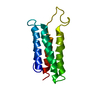
 Components
Components
 Homo sapiens (human) / Gene: ABL1, ABL, JTK7 / Plasmid: modified pET24d / Species (production host): Escherichia coli / Production host:
Homo sapiens (human) / Gene: ABL1, ABL, JTK7 / Plasmid: modified pET24d / Species (production host): Escherichia coli / Production host: 
 Escherichia coli BL21(DE3) (bacteria) / Strain (production host): BL21(DE3) / References: UniProt: P00519, EC: 2.7.1.112
Escherichia coli BL21(DE3) (bacteria) / Strain (production host): BL21(DE3) / References: UniProt: P00519, EC: 2.7.1.112 SOLUTION NMR
SOLUTION NMR Sample preparation
Sample preparation Processing
Processing Movie
Movie Controller
Controller


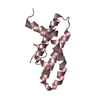


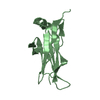
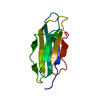
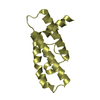
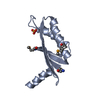
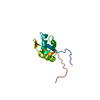
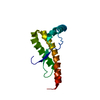
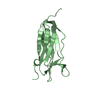
 PDBj
PDBj






